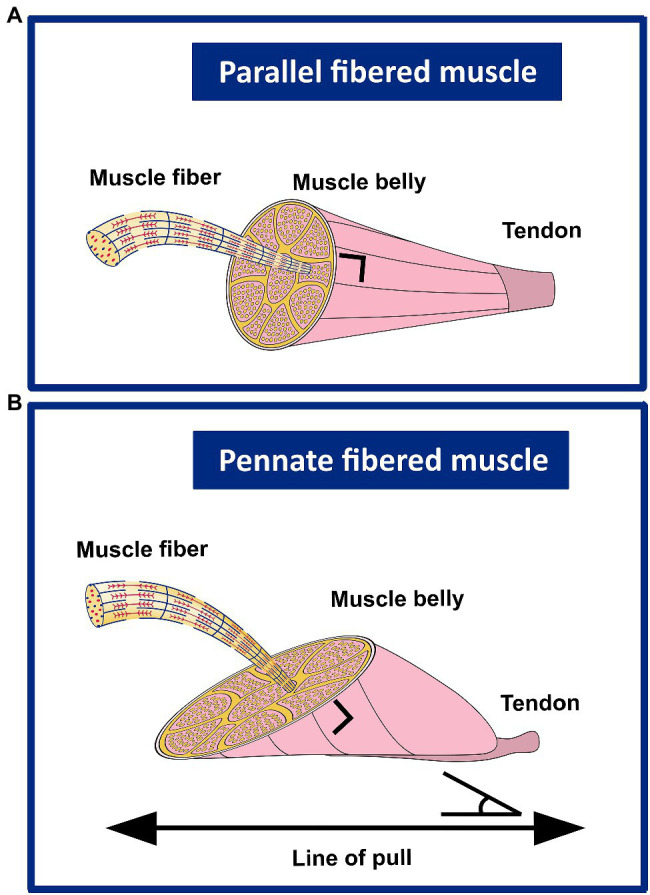Figure 4.

Schematic representation of the contribution of sarcomeres (serial and in parallel) to the muscle belly length, as well as PCSA in parallel and uni-pennate fibered muscles. (A) In parallel fibered muscles, the length of the muscle belly is determined by the number of sarcomeres in series, as well as the slack, optimum length and the length range of active force exertion, whereas sarcomeres arranged in parallel determine the (fiber) CSA. (B) In pennate fibered muscles, the muscle belly length is determined both by sarcomeres in series, as well as by the number of sarcomeres in parallel. The number of sarcomeres in parallel also determines the (fiber) CSA. This latter is described as the area of the transversal section perpendicular to the muscle fiber direction. In pennate muscles, the PCSA contributes to the optimum length and range of active force exertion. When muscle fibers that are under a line of pull generate force, the contribution to the muscle length is less than that of the muscle fiber length itself.
